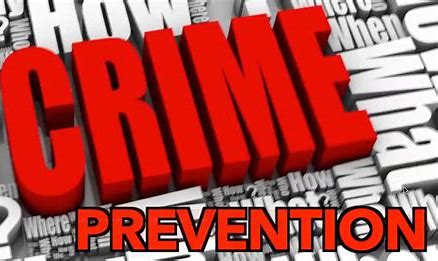Introduction to Mass Shootings in the United States:
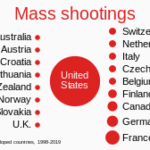
Mass shootings in the United States have become a disturbingly frequent occurrence, capturing headlines and igniting debates on gun control, mental health, and societal violence. While there is no universally accepted definition of a mass shooting, it generally refers to an incident in which four or more individuals are shot, often resulting in fatalities, excluding the shooter. These tragic events evoke shock, grief, and calls for action, yet they persist in the national consciousness as a grim reality of modern American life.
Historical Context:
The history of mass shootings in the United States traces back decades, with notable incidents punctuating the timeline of gun violence. One of the earliest recorded mass shootings occurred in 1966, when Charles Whitman ascended the University of Texas at Austin’s clock tower and opened fire, killing 16 people and injuring dozens more before being shot dead by police. This event shocked the nation and served as a harbinger of the mass shootings to come.
Throughout the latter half of the 20th century and into the 21st century, mass shootings continued to afflict communities across the United States with alarming regularity. Notable incidents such as the Columbine High School massacre in 1999, the Virginia Tech shooting in 2007, and the Sandy Hook Elementary School shooting in 2012 left indelible scars on the national psyche, prompting calls for legislative action and societal change.
Contributing Factors:
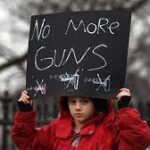
The factors contributing to mass shootings are complex and multifaceted, encompassing issues related to gun access, mental health, societal alienation, and cultural influences. One key factor often cited in discussions of mass shootings is the prevalence of firearms in the United States. With an estimated 393 million civilian-owned firearms in circulation, the country boasts one of the highest gun ownership rates per capita globally. The ready availability of firearms, including high-capacity magazines and military-style weapons, facilitates the perpetration of mass violence and amplifies its lethality.
Additionally, mental health plays a significant role in many mass shootings, with perpetrators often exhibiting signs of psychological distress or instability prior to their acts of violence. Despite this correlation, it’s essential to recognize that the vast majority of individuals with mental illness are not violent, and stigmatizing mental health conditions can hinder efforts to address the root causes of mass shootings.
Societal factors, such as social isolation, economic inequality, and cultural glorification of violence, also contribute to the prevalence of mass shootings. Alienated individuals who feel disconnected from their communities may resort to violence as a means of expressing their grievances or seeking notoriety, fueled by a media landscape that sensationalizes acts of mass violence and perpetuates a cycle of fear and fascination.
Notable Incidents:
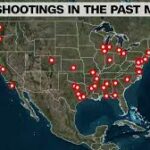
Numerous mass shootings have left an indelible mark on American history, each characterized by its own unique circumstances and consequences. Some of the most prominent incidents include:
Columbine High School massacre (1999):
Eric Harris and Dylan Klebold, two high school students in Littleton, Colorado, carried out a meticulously planned attack, killing 12 classmates and a teacher before taking their own lives. The Columbine shooting shocked the nation and prompted widespread discussions about school safety and youth violence.
Virginia Tech shooting (2007):
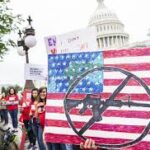
Seung-Hui Cho, a student at Virginia Tech University, perpetrated the deadliest school shooting in U.S. history, killing 32 people and wounding many others before committing suicide. The Virginia Tech massacre spurred debates about campus security, mental health services, and gun control laws.
Sandy Hook Elementary School shooting (2012):
Adam Lanza, a troubled young man, stormed Sandy Hook Elementary School in Newtown, Connecticut, killing 20 children and six educators before taking his own life. The tragedy reignited the national conversation about gun violence and prompted renewed calls for legislative action.
Las Vegas shooting (2017):
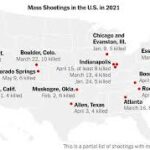
Stephen Paddock, a 64-year-old man, opened fire on a crowd of concertgoers from his hotel room at the Mandalay Bay Resort and Casino, killing 58 people and injuring hundreds more in the deadliest mass shooting in modern U.S. history. The Las Vegas shooting reignited debates about gun control and hotel security measures.
Parkland school shooting (2018):
Nikolas Cruz, a former student at Marjory Stoneman Douglas High School in Parkland, Florida, unleashed a deadly rampage, killing 17 students and staff members and injuring others. The Parkland shooting sparked a nationwide youth-led movement for gun control reform, with survivors organizing marches, rallies, and advocacy campaigns.
Efforts to Address Mass Shootings:
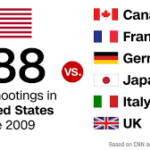
In response to the persistent threat of mass shootings, policymakers, advocacy groups, and community stakeholders have proposed various strategies to prevent future tragedies and mitigate the impact of gun violence. These efforts encompass legislative reforms, law enforcement initiatives, mental health interventions, and community-based prevention programs.
One of the most contentious issues surrounding mass shootings is gun control, with advocates calling for measures such as universal background checks, assault weapons bans, and restrictions on high-capacity magazines. While some states have enacted stricter gun laws in the wake of mass shootings, efforts to pass comprehensive federal gun control legislation have faced significant political opposition and legislative gridlock.
In addition to legislative reforms, efforts to address mass shootings often include initiatives aimed at improving mental health services and support systems. By expanding access to mental health care, reducing stigma, and promoting early intervention for individuals at risk of violence, communities can identify and support those in need before they resort to lethal means.
Law enforcement agencies also play a critical role in preventing and responding to mass shootings, with efforts focused on enhancing threat assessment capabilities, coordinating multi-agency responses, and implementing active shooter training programs for first responders and community members alike. By equipping law enforcement agencies with the resources and training needed to identify and neutralize potential threats, communities can enhance their preparedness and resilience in the face of mass violence.
Community-based prevention programs, including youth mentoring initiatives, conflict resolution training, and violence prevention campaigns, offer another avenue for addressing the root causes of mass shootings and fostering positive social change. By engaging with at-risk individuals, building supportive networks, and promoting non-violent alternatives, communities can create environments that are less susceptible to the influence of extremism and violence.
Conclusion:
Mass shootings in the United States represent a complex and multifaceted challenge, one that requires a comprehensive and coordinated response from policymakers, law enforcement agencies, mental health professionals, and community stakeholders. By addressing the underlying factors contributing to mass shootings, including access to firearms, mental health stigma, and societal alienation, communities can work towards preventing future tragedies and creating a safer and more resilient society for all. While the road ahead may be long and arduous, the collective efforts of individuals and organizations committed to ending gun violence offer hope for a brighter and more secure future.
